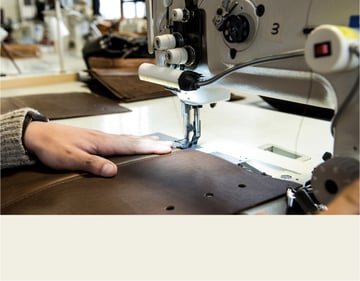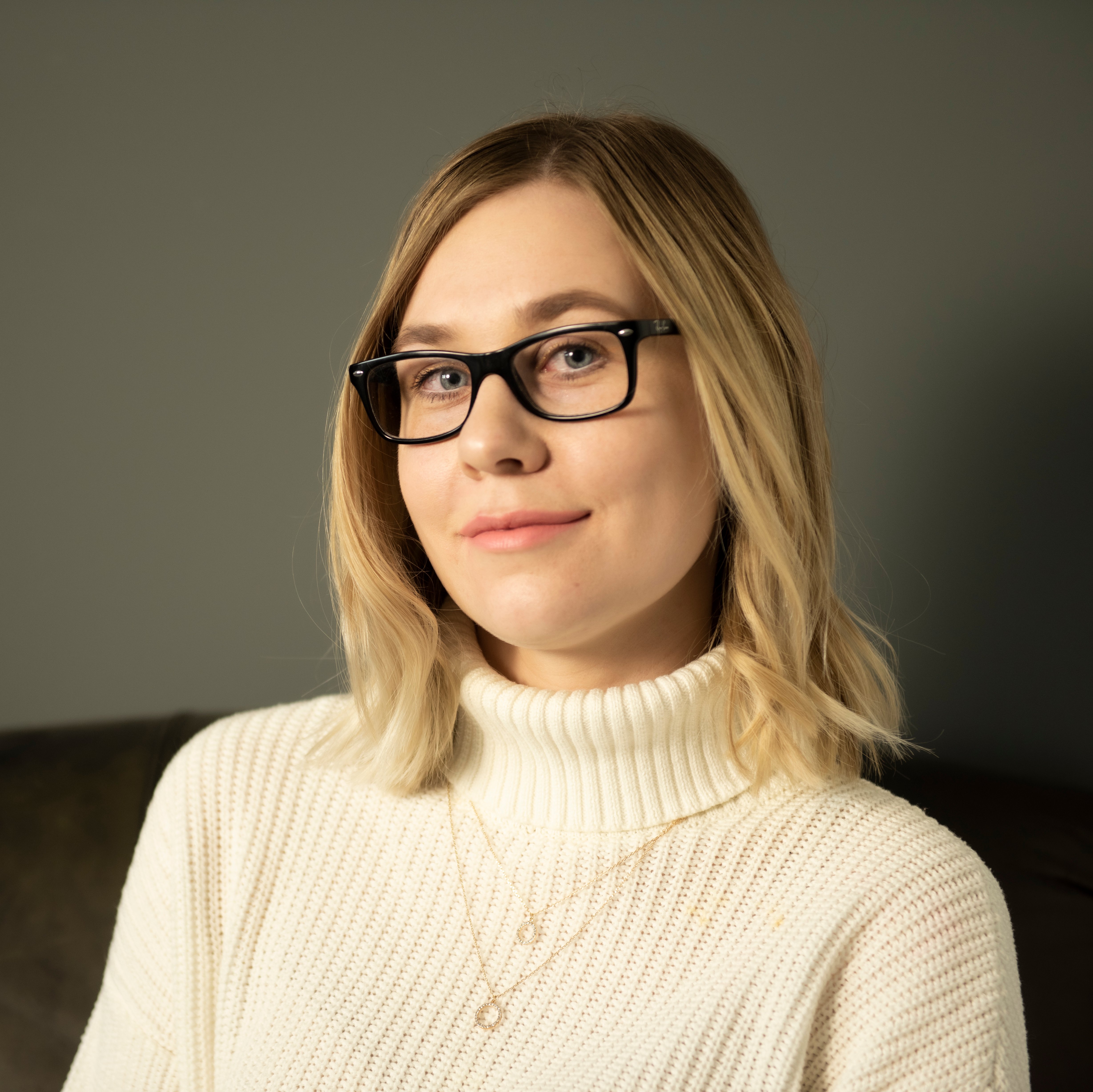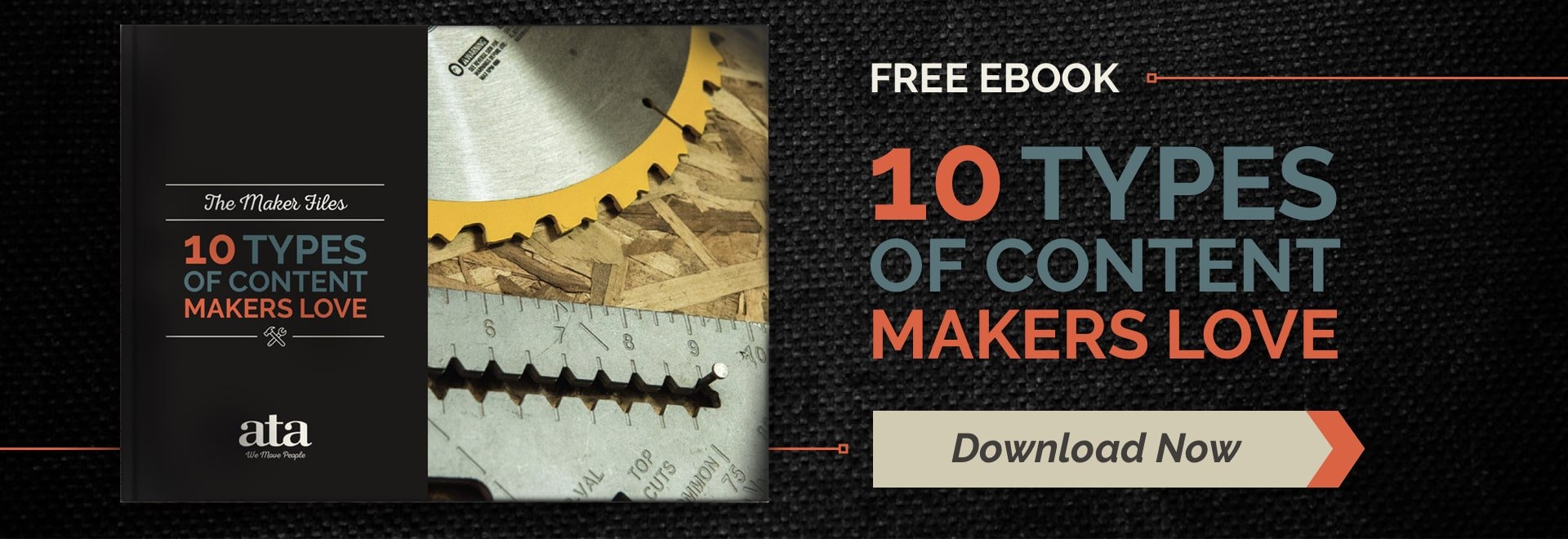 Search engines, social media platforms, and other resources have revolutionized the way that modern designers and all makers who sew source their tools and materials. When the answer to almost any question (or, if not, instructions on how to find it) is available online, sewists and designers are incredibly knowledgeable and self-sufficient in their purchase process. But how do they get from realizing they have a need to making a purchase? Using the Buyer's Journey framework, we can understand what this purchasing process tends to look like today.
Search engines, social media platforms, and other resources have revolutionized the way that modern designers and all makers who sew source their tools and materials. When the answer to almost any question (or, if not, instructions on how to find it) is available online, sewists and designers are incredibly knowledgeable and self-sufficient in their purchase process. But how do they get from realizing they have a need to making a purchase? Using the Buyer's Journey framework, we can understand what this purchasing process tends to look like today.
The Buyer's Journey framework outlines the three main stages of research today's consumers move through in their purchasing process: Awareness, Consideration, and Decision. In this post, we'll discuss the main points of the Buyer's Journey for today's makers who sew and the types of information they're looking for during each phase of the process.
The Buyer's Journey for Sewists and Designers
As outlined by Hubspot, the Buyer's Journey is a framework that show the process that buyers go through before making a purchase. This outline allows marketers to understand what types of information help their audience understand what their products and services do and why they should purchase them. While this framework was designed to relate to consumers looking to buy any type of product or service in the digital age, here's what the three steps of the Buyer's Journey look like for sewists, designers, and all makers who sew.
![]()
Awareness Stage
During the Awareness stage, sewists and designers start researching in order to understand and identify the cause of a problem they're experiencing in their work. These problems can range widely across the industry, from a sewing machine that won't work to fabric that doesn't lay correctly to a design element that is causing issues with the rest of the garment or is difficult to sew. These problems and more are what set the maker's research into motion, and during the Awareness stage, sewists and designers are looking for troubleshooting information or anecdotes from other makers or brands that can help them identify the root of the issue or why it's occurring.
While in the Awareness stage, sewists and designers are looking for content and information that explains why they're experiencing problems in a cause and effect manner. Troubleshooting or beginners guides, video tutorials, specific Q&A blog posts or articles, and FAQs are just some of the digital resources makers who sew would benefit from during the Awareness stage.
Consideration Stage
 In the Consideration stage, makers who sew will have used the information they collected in the Awareness stage to clearly identify and give a name to the problem they're experiencing. Now, in this stage, they will begin to define the different possible approaches they could use to address or solve this problem. For example, if they've learned that their sewing machine has stopped working because of a broken part inside the machine, they'll need to decide whether to try to repair the machine on their own, take their machine to the shop, or purchase a brand new machine.
In the Consideration stage, makers who sew will have used the information they collected in the Awareness stage to clearly identify and give a name to the problem they're experiencing. Now, in this stage, they will begin to define the different possible approaches they could use to address or solve this problem. For example, if they've learned that their sewing machine has stopped working because of a broken part inside the machine, they'll need to decide whether to try to repair the machine on their own, take their machine to the shop, or purchase a brand new machine.
Each of these approaches may be viable, and each solution will require a purchase of some kind, whether it is a tool or replacement part, a repair service, or a new machine all together. In another case, a sewist might learn that the fabric they're trying to use is too thin for the garment they're trying to make, and would compile solutions like purchasing a heavier fabric or finding another fabric to serve as a backing to the thin material. With these problem or any others that are identified, the Consideration stage is the time to research and learn about all possible methods for solving the problem.
During the Consideration stage, makers who sew are searching for content that explains the different approaches to solving the problem they've encountered. Content from your brand, such as tutorial videos or articles, social posts by makers or brands who have experienced the same issues, how-to guides or videos, and more can all be valuable at this stage.
Decision Stage

Finally, once the sewist has decided on which approach or method is best for solving their problem, they move on to the Decision stage, where they weigh the product and service options available to carry out that method. Makers in the Decision stage know how they want to solve their problem, but they don't know what to spend their money on or where to spend it yet. To continue with our sewing machine example, if a sewist has decided that a repair is too costly for their old machine or the part is impossible to replace, they may decide to purchase a new sewing machine.
During the decision stage, they will compare and contrast machines from different brands (or all from their favorite brand) to decide which machine to buy. Research in the Decision stage includes both practical information (price, availability, shipping time) as well as qualitative evaluations (quality, speed, durability, etc.).
The Decision stage is the first time that a sewist or designer will start to learn about the features and benefits of your product or service as opposed to the strategy or justification for using the solution method. During this stage, content and product information is relevant, which includes product reviews, product comparison articles or videos, product demonstrations, and more. Sewists will also likely reach out to their community of fellow makers online to ask for personal recommendations at this stage.
Sourcing and Research in the Digital Era
An important concept for marketers to remember is that your audience isn't necessarily aware of the stages of the Buyer's Journey. To consumers, the Buyer's Journey is an informal process, and in some cases, stages may be skipped or completed out of order. The Buyer's Journey is simply designed to describe the general path to purchase for modern buyers in order to help marketers understand what information to provide to their potential customers.
The Buyer's Journey is also a framework that's meant to be filled in with the specifics of your industry and your ideal customer. As you get to know your audience better, you'll be able to fill in your brand's own Buyer's Journey with the specific needs, challenges, and questions faced by your target audience. When you're marketing your brand and products to makers who sew, the best way to use the Buyer's Journey is to understand the scope of information you need to provide to your potential buyers through content and communications. In order to guide sewists and designers toward purchasing your products that can truly add value to their craft and projects, you'll need content that addresses the questions they're asking at each of the three stages of the journey. By creating content that allows your brand to be there every step of the way during their research, you can portray your brand as an expert in the industry and a trustworthy partner that makers who sew want to purchase from.




